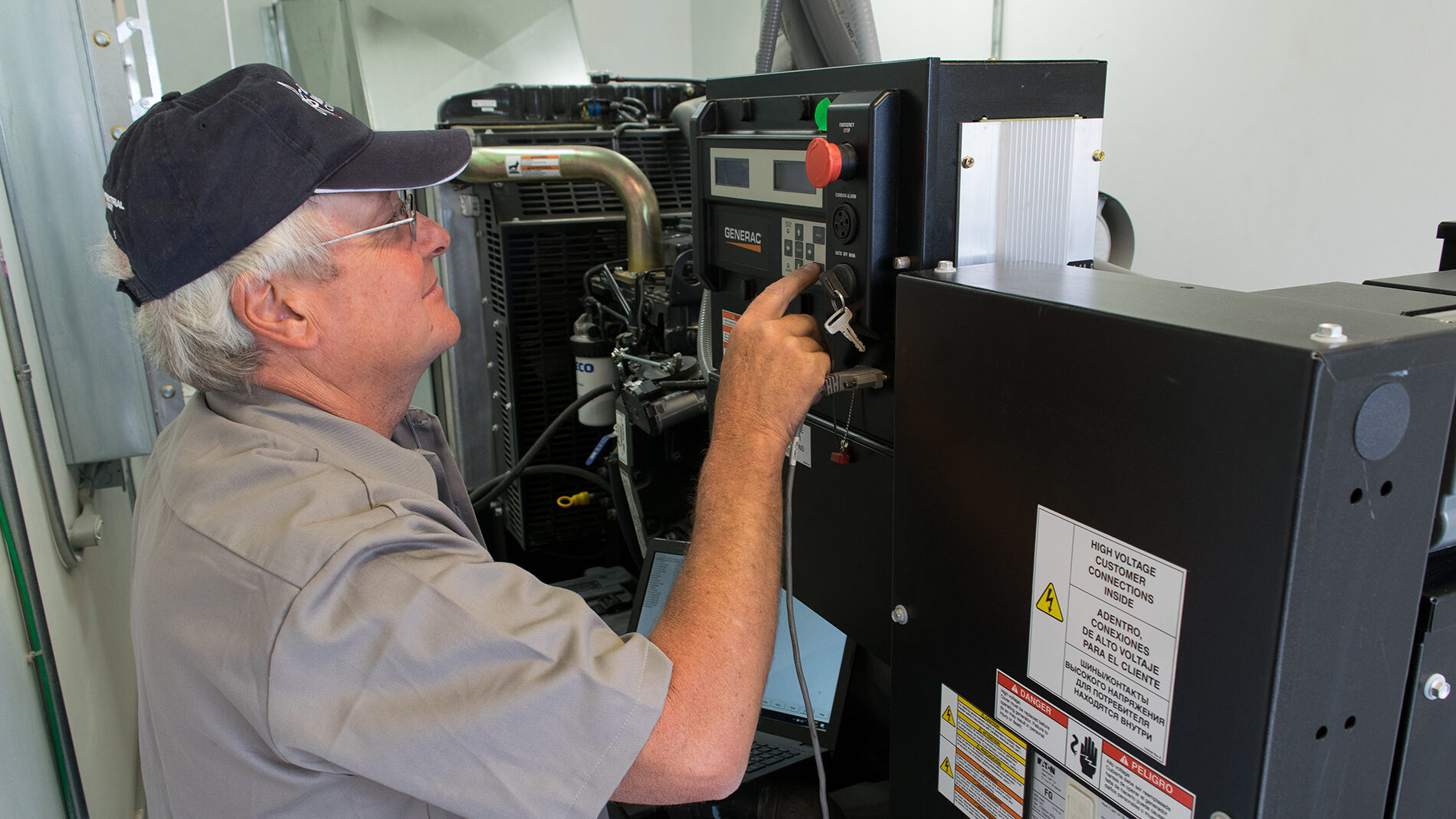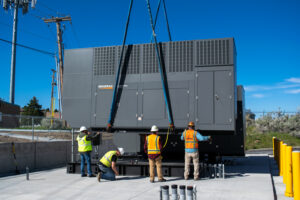
Loss of Generator Production?
Generators are large, intricate, power generating machines that we heavily rely on to keep the world running when a loss of utility power occurs. But what do we do if our generator stops producing that power?
One of the most commonly searched troubleshooting questions about backup generators is:
“Why is my generator running, but not producing electricity?”
We asked our technicians for their expertise on the subject, and here’s what they had to say.

Loss of Residual Magnetism (Most Common)
Generators work by moving electrical conductors through a self-created magnetic field. However, generators do not contain any magnets. The magnetic field referred to is created by taking some of the generator output voltage, converting it to DC, and feeding it into a coil to make an electromagnet.
Generators start up by using something called residual magnetism. This is a small amount of magnetism left over from the magnetic field that was created the last time the generator was running. This little bit of leftover magnetism is enough to produce a small amount of electricity. This small amount is used to create an electromagnet. As the engine begins to turn this electromagnet, moving its electric field, through the stator windings, your generator will produce more power. However, if residual magnetism is lost, your generator will produce no power at startup.
Loss of residual magnetism may be caused by the generation being out of use for a while, having a connected load when the generator is shut off, running your generator for too long with no load, or if your generator is new, it could have lost residual magnetism from long distance transportation vibration.
You can combat loss of residual magnetism by always running your generator with a load and disconnecting that load before you turn the generator off. There are ways to regain residual magnetism if it is lost, but they are not covered in this article.

Poor Connections
To fix poor connections, clean all ports from any particles, debris, or blockages and ensure all connections are tight. This is an important step in maximizing the reliability of your generator.
Excitation Circuit Wiring Error or Blockage
If a circuit wiring error is the issue, identify the error and correct it.
If an excitation circuit is blocked, use a multi meter to find the blocked excitation winding and reconnect it. For failure caused by just poor contact, you can polish the surface oxide layer until smooth, then the loose connection nut and bolt should be able to connect firmly.
Tripped Breaker
Find the reason the breaker has tripped and remedy it before starting the generator again.

Broken or Grounded Generator Excitation Winding
Use a 500V ohmmeter to check the ground insulation of the excitation winding, find out the ground point, and use a multi-meter to find the broken winding and restore it.
Worn Brushes
This is an easy fix: Simply replace the brushes.
Defective Breaker
Remove the spark plug to prevent any accidental starting. Then remove any screws that are holding the outlet housing in place. Disconnect the power harness, open the outlet housing cover, and take note of the wire orientation on the breaker you are replacing. Using a flat-head screwdriver to press on the tabs to release the breaker, remove the breaker protective cover from the old one. Finally, snap the new breaker in place and reconnect the wires. Reverse the prior steps to put everything back together.
Defective AVR (Automatic Voltage Regulator)
Unplug your spark plug to prevent any accidental starting. Remove the bolts or screws holding your generator’s alternator cover in place, disconnect the two spade connector wires to the brush assembly (take a picture to help you remember what goes where). Remove the screws holding the AVR in place, disconnect the quick-connector, connect the new AVR to the quick connector and follow the steps in reverse to reassemble.
Defective Capacitor
Remove the capacitor from the generator and discharge any leftover charge. Take a reading from the capacitor using a multimeter. The reading should be +/- 5uf of the specified rating printed on the side of the capacitor. If not, it should be replaced.
Are You Having Problems With Your Generator? We Can Help!
Call 800-595-5315 Or Connect With Our Expert Technicians Here:
Other Articles
- Critical Spare Planning

- Where Do I Start On My Generator Installation?

- How can Las Vegas heat lead to generator failures?


Lead Generator Technician
Graduated from Idaho State University with a degree in Heavy Duty Diesel and Onsite Power Generation. Damien is a master tinkerer and has been working on anything with a motor since he was about six years old. Besides being a generator fanatic, Damien is also an avid snowmobiler and aspiring world traveler.



gernaters are useful in our life
This is a very detailed article. But I have one question: when fixing a defective AVR in your generator, can this be done at home? Or should this job be done by a professional?
it may be a technical error if its still not running
My generator runs perfect. It’s just not producing electricity to the outlets. I might have lost residual magnetism. How do I regained it or replace it